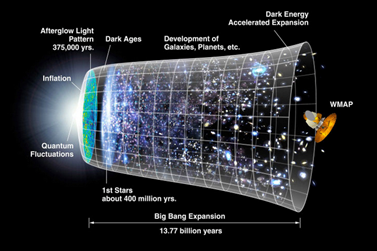The first microsecond of the Big Bang
A team of researchers from University of Copenhagen delved into what happened to a specific kind of plasma, the first matter ever to be present, during the first microsecond of Big Bang. Approximately 14 billion years ago, the universe changed from being a lot hotter and denser to expanding radically—a process dubbed ‘The Big Bang’. The details have been elusive.
The team studied a substance called Quark-Gluon Plasma that was the only matter that existed during the first microsecond of Big Bang. The results reveal how the plasma evolved in the early stage of the universe, according to You Zhou, Associate Professor at the Niels Bohr Institute, University of Copenhagen.
The plasma that consisted of quarks and gluons was separated by the hot expansion of the universe. Then the pieces of quark reformed into so-called hadrons. A hadron with three quarks makes a proton, which is part of atomic cores. These cores are the building blocks that constitutes earth, life and the surrounding universe. The Quark-Gluon Plasma (QGP) was present in the first 0.000001 second of Big Bang and soon disappeared because of the expansion.
Using the Large Hadron Collider at CERN, researchers were able to recreate this first matter in history and trace back what happened to it. The researchers also developed an algorithm able to analyze the collective expansion of more produced particles at once, than ever possible before, showing that QGP used to be a fluent liquid form and that it distinguishes itself from other matters by constantly changing its shape over time.
The detail brings us one step closer to solving the puzzle of the Big Bang and how the universe developed in the first microsecond. The study was published in the journal Physics Letters B and performed by You Zhou together with Zuzana Moravcova, a PhD at the Niels Bohr Institute at University of Copenhagen.
Original Release: Eureka Alert

